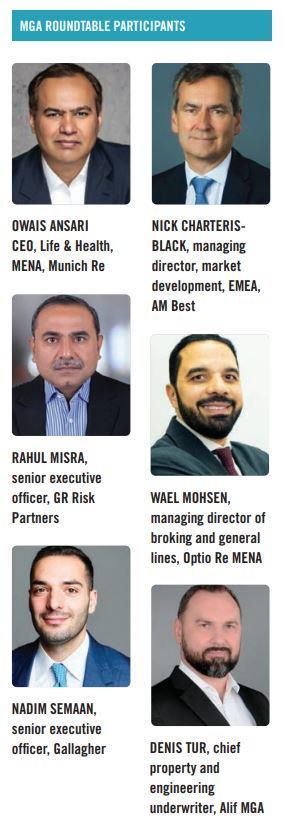DWIC’s day one roundtable discussed how MGAs are reshaping the traditional distribution model and driving efficiency in underwriting and product development.
The roundtable on MGAs was hosted by Gracita Aoa De Gracia, assistant vice-president, insurance and reinsurance, at DIFC. Panellists emphasised the MGA model as a source of innovation and a disruptor to the traditional insurance market.

They provide efficient distribution channels, expertise in their areas of focus, and tailored solutions to meet evolving customer needs. MGAs are leveraging data analytics, technology and market insights in myriad ways, to develop innovative insurance products and streamline underwriting processes.
So long as they continue to do this, speakers underlined, they will continue to receive broker business and underwriting capacity.
But there are regulatory challenges, panellists agreed. Some supervisors remain wary of MGAs, with licensing requirements, governance and compliance issues remaining barriers in some Middle East territories. There is also still suspicion surrounding MGAs based on the potential for short-termism.
Panellists emphasised that while some MGA backers may have short-to-medium-term horizons, many more offer enduring relationships with clients.
Other speakers pointed out that by continuing to invest in technology, MGAs can continue to provide a competitive edge versus traditional rivals for their customers and their backers.
They may be able to turn their use of technology for datadriven underwriting to also gain a competitive edge in issues such as data privacy, governance and compliance.
WHAT’S THE TEN-YEAR PLAN?
Panellists agreed that for some, “the natural evolution” will be to morph into traditional insurance companies in the next decade.
This may come through long-term investment or acquisition, and one speaker said that some MGAs may decide to start captive insurance vehicles, which can develop in time into their own risk carrying insurance business.
Two further trends were put forward: a move towards more regional MGAs, as a softening market will mean “underwriters want to get closer to their clients”; and investment in technology, data and AI.
Such moves are likely to secure more long-term capacity.
CONCLUDING REMARKS
The roundtable participants were asked to offer a closing thought on the future of MGAs in the industry.
Wael Mohsen of Optio Re stated: “To encourage MGAs in the (re) insurance market, we need more support from regulators, regarding licensing requirements and establishing operations, to develop better opportunities for growth in the (re)insurance sector.”
Denis Tur, Alif MGA’s chief property and engineering underwriter, explained that he was fully committed to the model: “I’m optimistic about the future of MGAs as drivers for the Middle East’s insurance market. I changed my own 20-year career in a reinsurance company to work for an MGA.”
GR Risk Partners’ senior executive officer Rahul Misra commented: “We see MGAs as an engine for evolution, because we continue to identify new risks coming up from existing product lines, and MGAs are the fi rst ones to look at them.”
Nick Charteris-Black, managing director, market development, EMEA, AM Best, said: “We maintain a positive outlook on the global MGA segment. Positives include sustained growth and performance, the ability to serve under-served and emerging risks, and technology and talent continuing to drive innovation. Negatives include tight capacity for certain risks, some uncertainty in the fronting market, and ongoing, evolving economic challenges.”
Gallagher Dubai’s senior executive officer Nadim Semaan closed with: “We’re very happy with the growth of MGAs in the region, and we will support MGAs, provided they offer long-term solutions to our clients and a robust reinsurance capacity.”










No comments yet